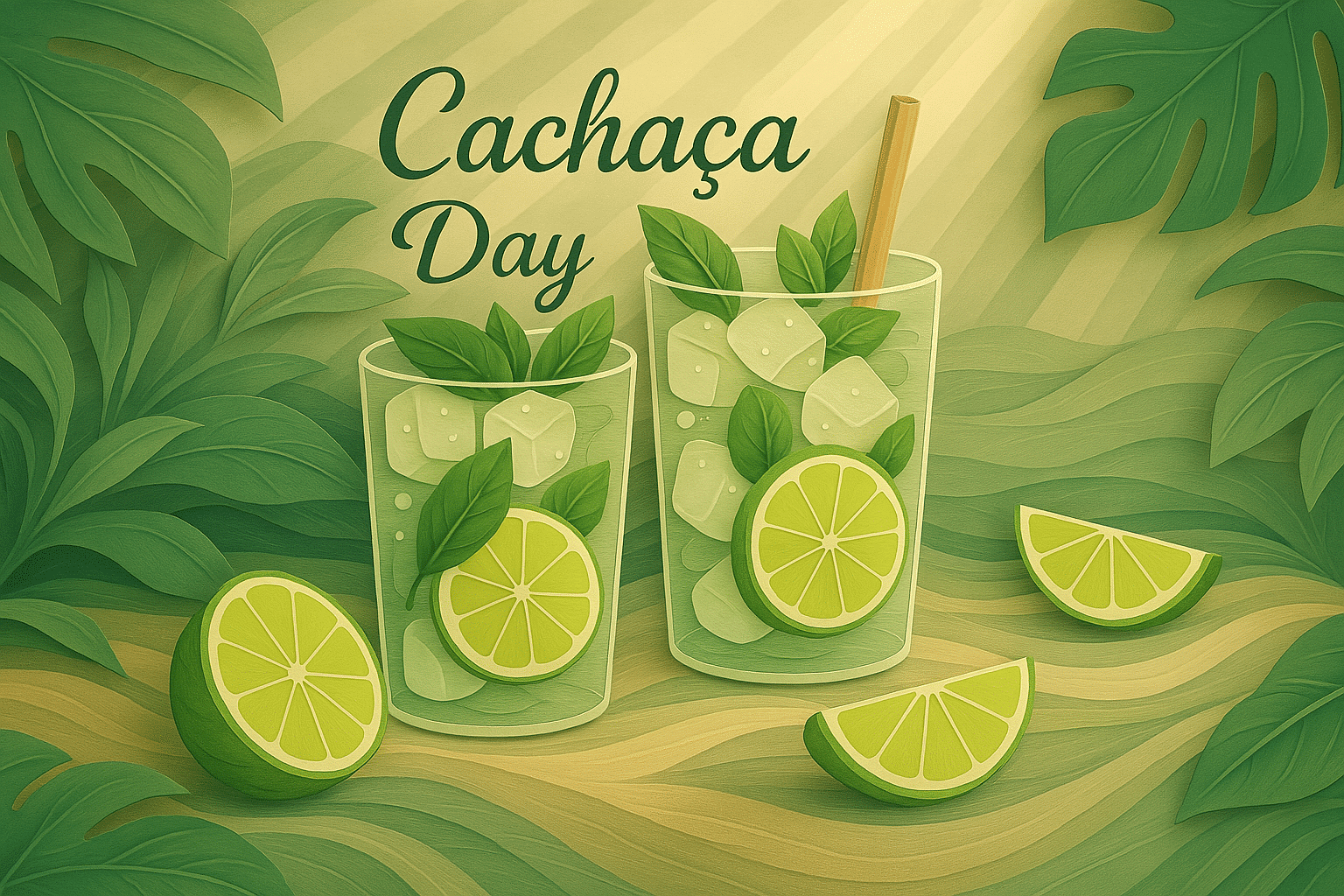What is International Cachaça Day?
International Cachaça Day is celebrated every year on June 12. The day honors Brazil’s most famous spirit: cachaça. Made from fresh sugarcane juice, cachaça is the base of the classic Brazilian cocktail caipirinha. It is often mistaken for rum, but its ingredients, history and flavor make it a category of its own.
This day aims to raise global awareness of cachaça’s cultural value and long tradition. From colonial sugar plantations to trendy cocktail bars, cachaça has remained a symbol of Brazilian identity. International Cachaça Day is not just a celebration of flavor, but of heritage.
History and Origin
Cachaça has been made in Brazil since the 1500s, when Portuguese settlers began distilling fermented sugarcane juice. It quickly became popular among all social classes. Its production spread across the country, forming a vital part of Brazil’s agricultural and cultural economy.
In the 18th century, the Portuguese crown tried to ban cachaça to protect their own liquor exports. That attempt failed. Over time, cachaça became more than a drink ; it became a symbol of resistance and national pride.
International Cachaça Day was created to promote this rich history and to make sure the drink is recognized as distinct from rum. It is a day to enjoy the spirit, but also to respect the skill and tradition behind it.
Who participates in International Cachaça Day?
- Brazilian distilleries: Host tours and tastings to showcase different cachaça styles and educate visitors.
- Bartenders and mixologists: Use the day to create new cocktails or revisit classics using high-quality cachaça.
- Cultural institutions: Highlight the drink’s place in Brazil’s history and identity through exhibitions or talks.
- Bars and restaurants: Offer themed drinks, special menus, and cocktail pairings.
- Spirit enthusiasts: Share tasting notes, cocktail recipes, and personal favorites online and offline.
Slogans and Themes
Slogans like “Celebrate Brazil’s Spirit,” “Cachaça Is Not Rum,” and “Raise a Glass to Heritage” reflect the core message of this day. The themes often revolve around national pride, craftsmanship, and cultural identity. It is about flavor, yes ; but also about recognition and respect.
Colors, Symbols, and Patterns
Colors
- Green: Symbolizes the sugarcane fields and the natural origin of the drink.
- Gold: Represents aged cachaça and the richness of its tradition.
- White: Refers to the clear, unaged variety and purity of the spirit.
Symbols
- Sugarcane stalk: Emphasizes the agricultural foundation of cachaça.
- Copper still: Reflects the traditional distillation process used by many producers.
- Caipirinha glass: Connects the drink to its most famous cocktail.
Patterns
- Wave designs: Represent the smooth and flowing nature of the drink.
- Geometric prints: Inspired by Brazilian folk art and used in label designs.
- Leaf motifs: Reference the plant-based origin and rural roots of the spirit.
Most Used Hashtags
- #CachaçaDay
- #InternationalCachaçaDay
- #BrazilianSpirit
- #CaipirinhaTime
- #CelebrateCachaça
How do you celebrate International Cachaça Day?
- Host a tasting: Invite friends to compare different styles, from fresh to barrel-aged.
- Make cocktails: Mix a classic caipirinha or get creative with new ingredients.
- Support local bars: Order a cachaça-based drink and tip your bartender well.
- Learn more: Explore the history of cachaça and the regions where it’s made.
- Share online: Post your drinks, your bottles, or your favorite recipes with others.
Why is International Cachaça Day important?
This day is important because it puts a spotlight on one of the most distinctive spirits in the world. Cachaça is not just a drink. It’s part of Brazil’s soul. From rural distilleries to modern mixology, it tells a story of identity, labor, and innovation.
Recognizing cachaça on the world stage means honoring its producers, its culture, and its legacy. This day helps preserve traditional methods, boost small businesses, and educate new generations of drinkers about what makes cachaça truly special.
Features
June 12: Cachaça Day
Why do you keep falling for the same type?
Read the article Lovemaps: the hidden blueprint of our love.

